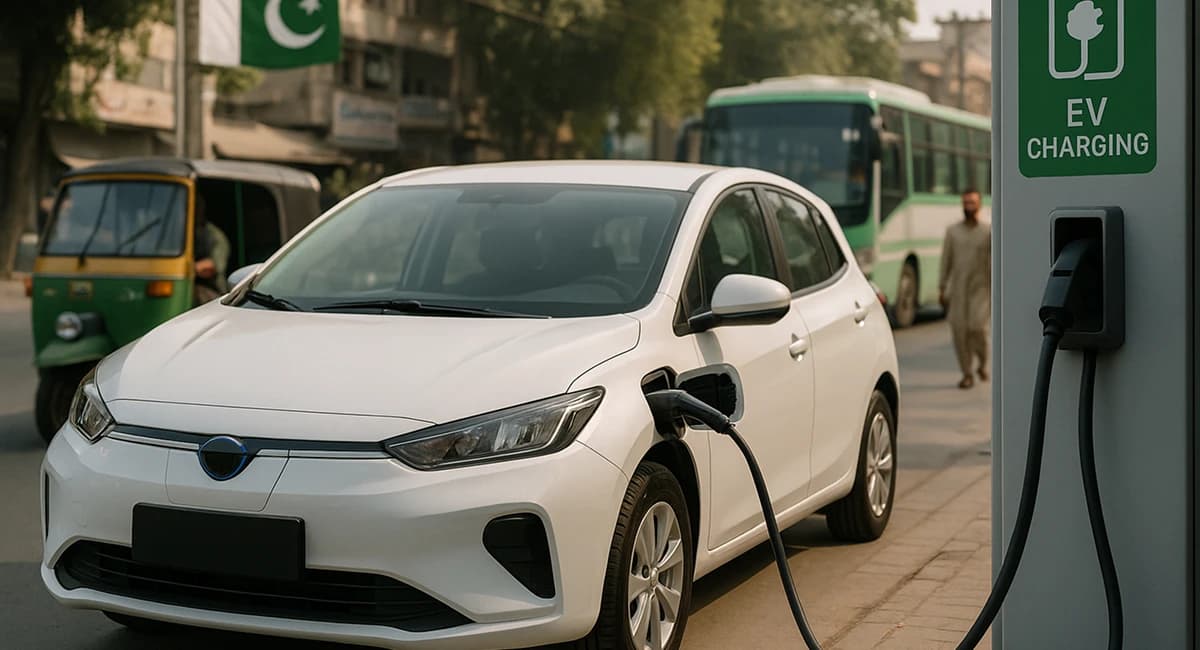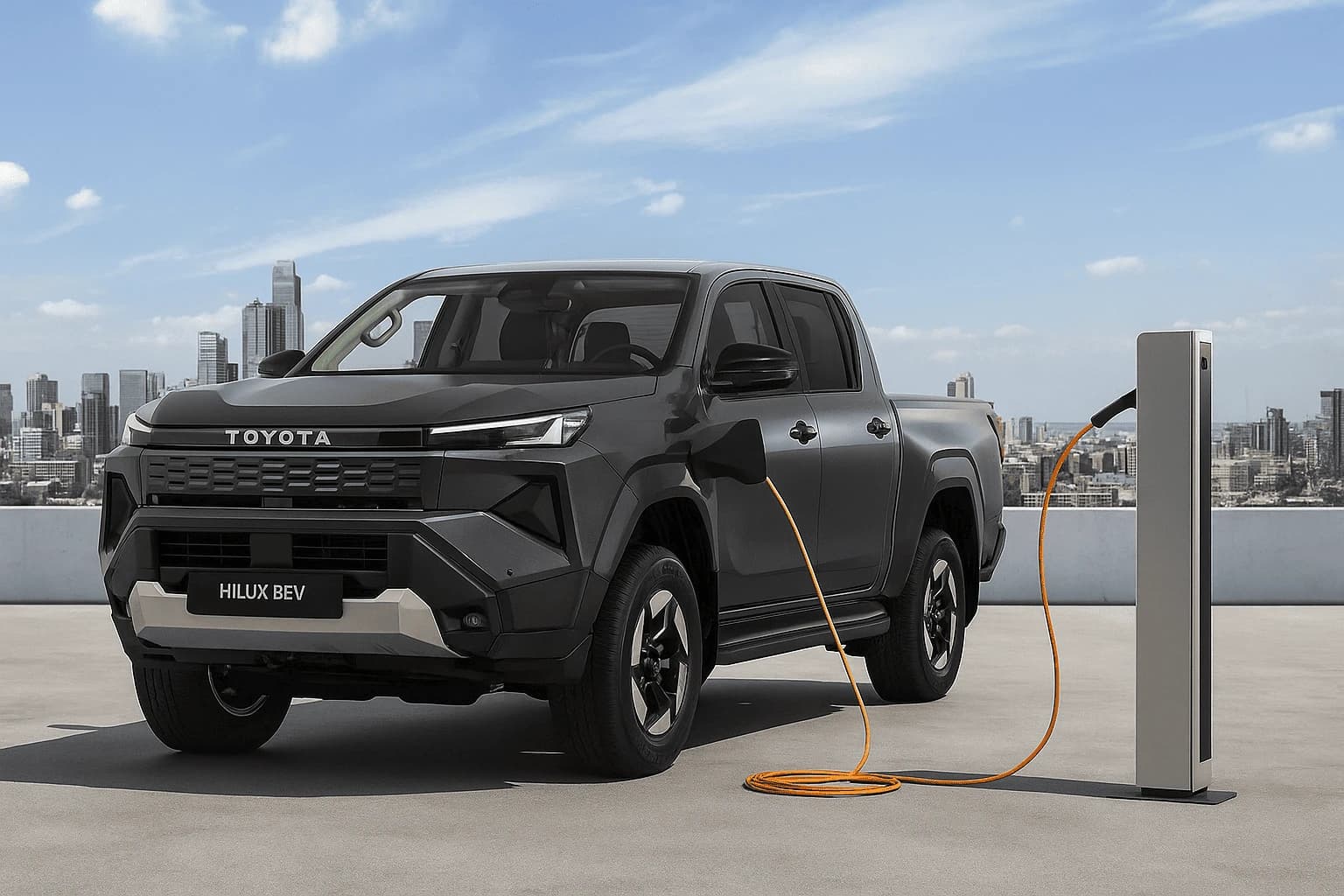
* All product/brand names, logos, and trademarks are property of their respective owners.
Electric vehicles (EVs) are no longer a futuristic dream — they’re the centerpiece of today’s global transportation revolution. From Europe’s zero-emission zones to China’s rapid EV dominance, the world is accelerating toward a cleaner, more sustainable future. But what about Pakistan? Is our infrastructure catching up? And more importantly, are we really ready for this electric leap?
In 2025, Pakistan finds itself at a pivotal crossroads. With the New Energy Vehicle (NEV) Policy rolling into its next phase, the government's goal of reaching 30% EV adoption by 2030 suddenly feels both ambitious and urgent. Backed by tax incentives, policy reforms, and international partnerships, there’s real momentum building. Yet for every headline promising thousands of EVs on the roads, there’s a counter-reality: limited charging stations, urban-rural infrastructure gaps, and concerns about our already-strained electricity grid.
This blog takes a deep dive into where Pakistan stands right now. We’ll explore the latest updates on EV charging infrastructure, analyze how supportive the 2025 policy really is, and spotlight the roles of key players — from government bodies to private companies like BYD and Sazgar. We’ll also look beyond the buzz, unpacking the challenges of execution, energy stability, and environmental impact.
So buckle up — whether you’re an auto enthusiast, a policymaker, or just a curious citizen — this is your complete guide to understanding Pakistan’s electric vehicle journey in 2025.
As of 2025, Pakistan has taken noticeable strides in expanding its EV charging infrastructure, but the journey is far from complete. According to government sources, over 300 charging stations have been installed across major cities like Islamabad, Lahore, and Karachi. Fast-charging corridors along highways such as M-1 and M-2 are now partially operational, enabling limited intercity EV travel.
Private-sector initiatives are playing a crucial role. BYD, in partnership with Mega Motors and Hub Power Company, plans to deploy 20–30 new charging stations by early 2026. Oil companies like Shell and PSO have also begun pilot programs to install chargers at fuel stations. Despite this, rural regions and smaller cities remain underserved, and most stations still cater to specific EV models or lack fast-charging capabilities.
Perhaps the most pressing issue facing EV adoption in Pakistan is the instability of the national grid. Load-shedding — a persistent issue — severely limits the viability of dependable EV charging, particularly in residential areas. The National Electric Power Regulatory Authority (NEPRA) has acknowledged this challenge, emphasizing the need to upgrade distribution systems and allocate cleaner energy sources for EV-related demand.
Moreover, Discos (distribution companies) are under pressure to adapt to higher loads without compromising service to existing consumers. The potential of solar-powered or hybrid charging stations has been proposed, but implementation is still in the pilot phase. Without significant grid reforms, scaling EV infrastructure remains a tough climb.
Another underexplored aspect is battery lifecycle management. EV batteries typically need replacement after 5–7 years and pose environmental risks if not disposed of properly. The NEV policy includes provisions for battery recycling and end-of-life treatment, but on-ground enforcement is limited.
There are few formal recycling units in operation, and most battery disposal happens informally — often in environmentally unsafe ways. Experts suggest that without a structured recycling ecosystem, Pakistan could face serious ecological consequences despite the eco-friendly image of EVs.
The New Energy Vehicle (NEV) Policy has undergone several key updates in 2025, reflecting Pakistan’s intent to become a regional leader in EV adoption. Among the most impactful changes are fiscal incentives for both consumers and manufacturers. Customs duties on imported EV parts remain at a nominal 1%, making it easier for companies to assemble vehicles locally. Additionally, buyers of e-bikes and electric auto-rickshaws can now avail subsidies of PKR 50,000 and PKR 200,000 respectively.
To further ease ownership, the government is offering interest-free loans through the State Bank’s green financing program, targeting middle-income families. These moves are designed not just to promote EV use but also to shift public transportation towards cleaner alternatives. Approval processes for installing charging infrastructure have also been fast-tracked under the 2025 update, making it easier for private investors to enter the space.
2025 has witnessed a surge in local and international interest in Pakistan’s EV market. BYD, the Chinese EV giant, is collaborating with local partners to establish a manufacturing facility in Karachi by 2026. This plant is expected to assemble passenger EVs and buses, generating thousands of jobs and boosting Pakistan’s industrial output.
Other key players like Sazgar and Master Changan are already producing e-rickshaws and small commercial EVs. With the government offering land, tax holidays, and reduced energy tariffs for EV production zones, the investment landscape has become highly favorable. This local assembly push is crucial for reducing vehicle costs and enhancing affordability for Pakistani consumers.
Despite the promising framework, policy implementation remains uneven. One major challenge is coordination between federal and provincial authorities. For instance, while the Ministry of Climate Change leads the national EV strategy, execution often depends on provincial energy departments, city administrations, and regulatory bodies like NEPRA and NEECA.
Monitoring and enforcement mechanisms are still being developed, leading to delays in infrastructure projects and inconsistent application of subsidies. Additionally, there’s a lack of public awareness about the policy benefits, which limits adoption. Experts argue that without a centralized digital portal or real-time dashboard to track EV incentives and rollout status, progress could stall.
Pakistan’s journey toward electric vehicle (EV) adoption is gaining traction, but it’s a path riddled with both promise and complexity. With the government’s goal of achieving 30% EV penetration by 2030, 2025 stands as a crucial checkpoint. Encouraging signs include a growing number of charging stations, generous fiscal incentives, and increased private-sector investment. Companies like BYD, Sazgar, and Master Changan are helping bridge the gap between policy vision and on-ground reality.
However, challenges remain. The electricity grid’s instability continues to threaten the dependability of EV charging, especially outside major urban centers. Load-shedding, inadequate recycling systems, and a lack of coordination between national and provincial bodies all point to systemic issues that need urgent attention. While the NEV policy provides a strong foundation, it’s the execution — the how, where, and when — that will determine its success.
What’s clear is this: Pakistan is no longer debating whether EVs are the future — the question now is whether we can build the infrastructure and policy support fast enough to meet that future head-on. And for that, a unified national approach, stakeholder accountability, and public awareness are critical.
If you're a policymaker, investor, or concerned citizen, now is the time to engage. Support initiatives that push for clean energy, hold institutions accountable for delays, and encourage more inclusive EV policies. The road to electrification is long — but with the right steps, Pakistan can make it a success story worth emulating.

11 November 2025
No comments yet. Be the first to comment!